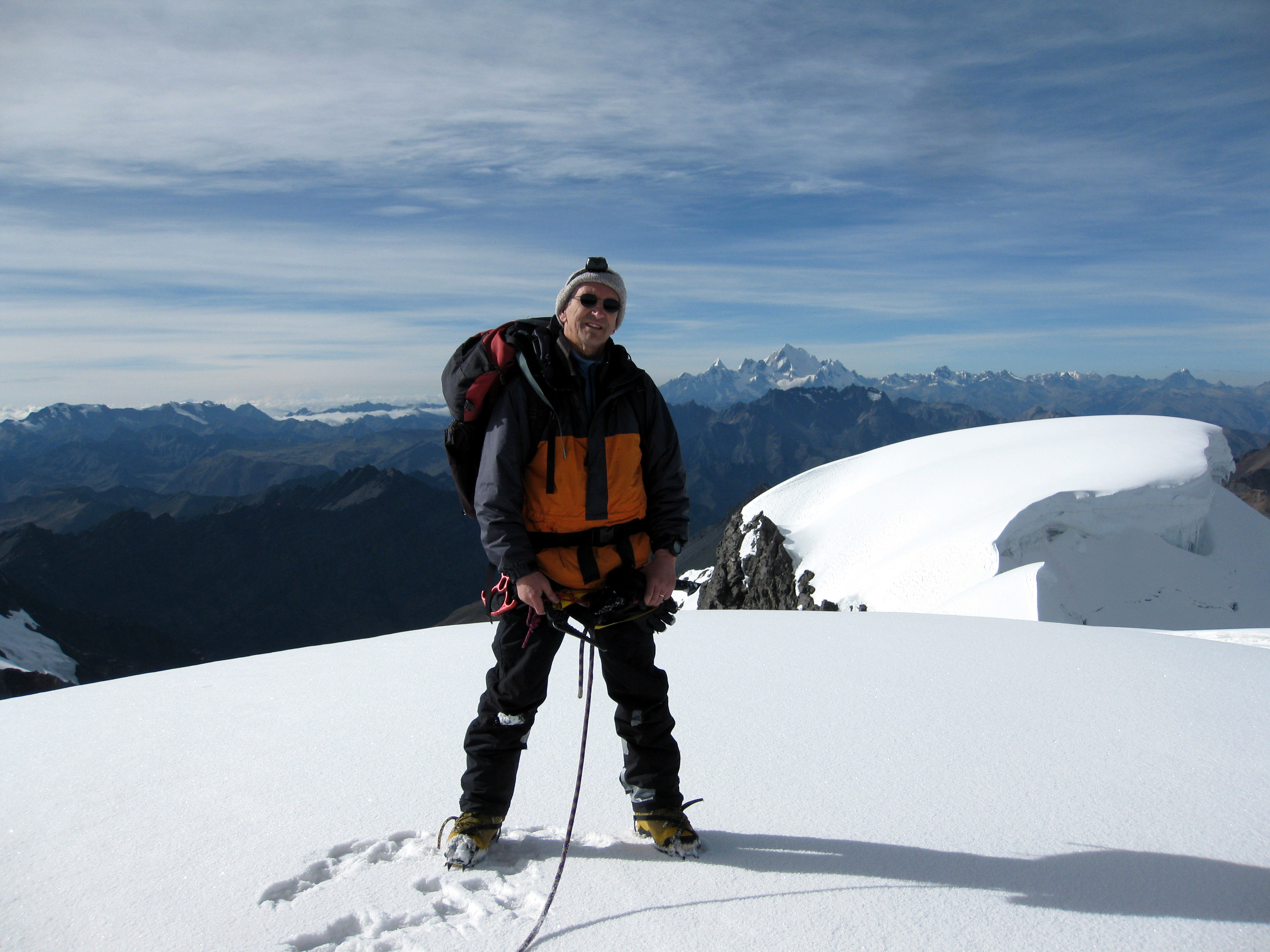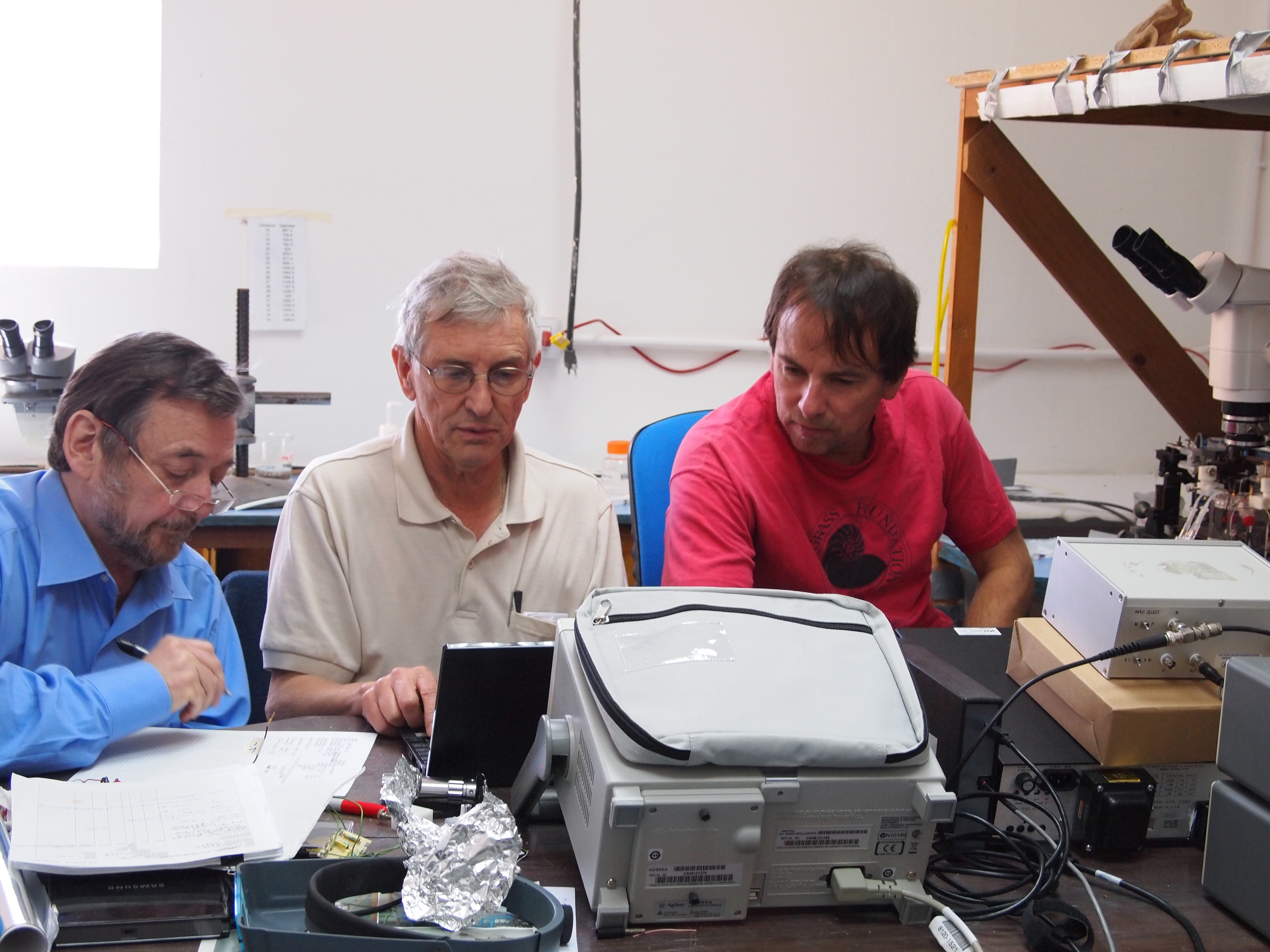Incoming Biophysical Society President Francisco Bezanilla, better known to most as “Pancho,” has been interested in science and the way things work for as long as he can remember, though it wasn’t until a high school biology teacher linked nerve conduction and electronics that everything came together. “When I learned that nerve conduction was essentially an electrical event, I began to see a real opportunity to use the tools of physics to understand biological phenomena,” Bezanilla said.
Growing up in Chile, Bezanilla headed to the Universidad Católica de Chile as a medical student once he completed high school. After three years of basic sciences, he decided to forgo the clinical path and instead finished his studies in the School of Engineering.
For his PhD, Bezanilla went west, to the Laboratory of Cellular Physiology at Universidad de Chile in Montemar, on the coast of Chile, where he met future colleagues Ramon Latorre, Bob Taylor, and Clay Armstrong. He completed his thesis studying the details of the sodium and potassium conductances during the action potential, using the squid giant axon from the giant Humboldt squid under voltage clamp, while using isotope fluxes simultaneously. Bezanilla followed up his PhD with two postdoc positions— the first at the National Institutes of Health with Taylor and Kenneth Cole; the second at the University of Rochester, first with Paul Horowicz and then with Armstrong.
Today, Bezanilla specializes in the biophysics of ion channels. Specifically, he works on voltage-dependent processes that span not only ion channels, but many other membrane proteins whose function controls or is affected by the membrane potential. Currently, his lab is trying to understand the molecular basis of the dynamics of voltage sensors, using a combination of electrophysiology, site-directed spectroscopy, mutagenesis, and modeling. Voltage sensors generate a gating current, which can be detected in the external circuit. “The challenge,” he explains, “is to find out how the structure is generating the function.”
 Through the years, Bezanilla has been called back to studying the squid axons he met during his PhD several times. Working together with Brian Salzberg, whom he met as a postdoc at the Marine Biological Laboratory in Woods Hole (summer 1972), they published a 1989 paper on optical measurement of the series resistance in squid axon voltage clamp experiments. “It remains one of my personal favorites,” says Salzberg, “not least because we were able to, legitimately cite a 1865 paper by J.C. Maxwell!” Bezanilla returned again to squid studies with Latorre, who completed his PhD in the Montemar Laboratory at the same time as Bezanilla, and Miguel Holmgren after receiving an NIH grant to reshape the old Montemar lab that was in ruins. As Latorre points out, “Squid lovers are die-hard.”
Through the years, Bezanilla has been called back to studying the squid axons he met during his PhD several times. Working together with Brian Salzberg, whom he met as a postdoc at the Marine Biological Laboratory in Woods Hole (summer 1972), they published a 1989 paper on optical measurement of the series resistance in squid axon voltage clamp experiments. “It remains one of my personal favorites,” says Salzberg, “not least because we were able to, legitimately cite a 1865 paper by J.C. Maxwell!” Bezanilla returned again to squid studies with Latorre, who completed his PhD in the Montemar Laboratory at the same time as Bezanilla, and Miguel Holmgren after receiving an NIH grant to reshape the old Montemar lab that was in ruins. As Latorre points out, “Squid lovers are die-hard.”
Described by his colleagues as “persistent” (or perhaps stubborn), Bezanilla has faced and overcome many challenges in his career and in science. His biggest career challenge came in Chile, immediately following the 1973 military coup d’état, which left a less than hospitable environment for academics. Along with colleague Julio Vergara, now a professor of Physiology at the University of California, Los Angeles, Bezanilla tried to set up a lab. “We did what we could,” he says, “we even managed to publish a paper in Nature of work we did while in Chile.” After two years, though, Bezanilla returned to the US to take a position at the University of California, Los Angeles, where he remained for 28 years.
He seems to have discovered a way to overcome his personal scientific challenge, a common challenge to researchers: “Not to give up when we fail repeatedly.” Salzberg and Latorre agree that Bezanilla is unbending in the face of such challenges. “He would tell me to do the experiment anyway, even though we were clever enough to think of a hundred reasons why it might not work,” Salzberg explains. “I’ve always tried to remember that.” Latorre agrees, citing as the most important lesson: “Never to surrender when confronting a tough problem.”
 Now a professor at the University of Chicago, where he runs a lab with his wife, Ana Correa, Bezanilla hopes to get closer to understanding the molecular motions under the influence of electric fields. “I believe that excitability will not be fully understood until we can predict the function from the molecular motions of the structure quantitatively,” he explains. “This will require developing new equipment to follow in-time transitions of single molecules and new analytical tools to predict their path, and I hope to contribute to that in the future.”
Now a professor at the University of Chicago, where he runs a lab with his wife, Ana Correa, Bezanilla hopes to get closer to understanding the molecular motions under the influence of electric fields. “I believe that excitability will not be fully understood until we can predict the function from the molecular motions of the structure quantitatively,” he explains. “This will require developing new equipment to follow in-time transitions of single molecules and new analytical tools to predict their path, and I hope to contribute to that in the future.”
As the new president of the Biophysical Society (his term began in February), he looks forward to continuing the current growth and success of the Society through promotion of new programs, improvements in the annual meetings, expansion of the Biophysical Journal, and, in general, more contact between members of the society. “I ask all members to please make their voices heard by contacting me or members
of the council with suggestions or criticisms that may improve the function of our Society,” he says, “I would especially like to hear from our young members.”
When he’s not in his lab or attending to his presidential duties, you can find Bezanilla reading, listening to music, or mountaineering. His persistence and optimism became clear to Salzberg while, during a climbing trip more than 25 years ago, he and Bezanilla were 16,000 feet up the side of a mountain in the north of Colombia. “We encountered whiteout conditions and we were stuck in camp for more than two days, unable to ascend the final 1,500 feet to the summit,” Salzberg explains. The group decided that on the next morning, if the weather had improved, they would continue their climb, and if the weather was the same or worse, they would head down, unable to reach the summit. “When morning came, and the weather was absolutely identical to what it had been, Pancho declared that it was ‘better,’ and we headed up.” The group did eventually reach the summit (and the bottom) safely, and celebrated with Bezanilla’s traditional can of condensed milk.